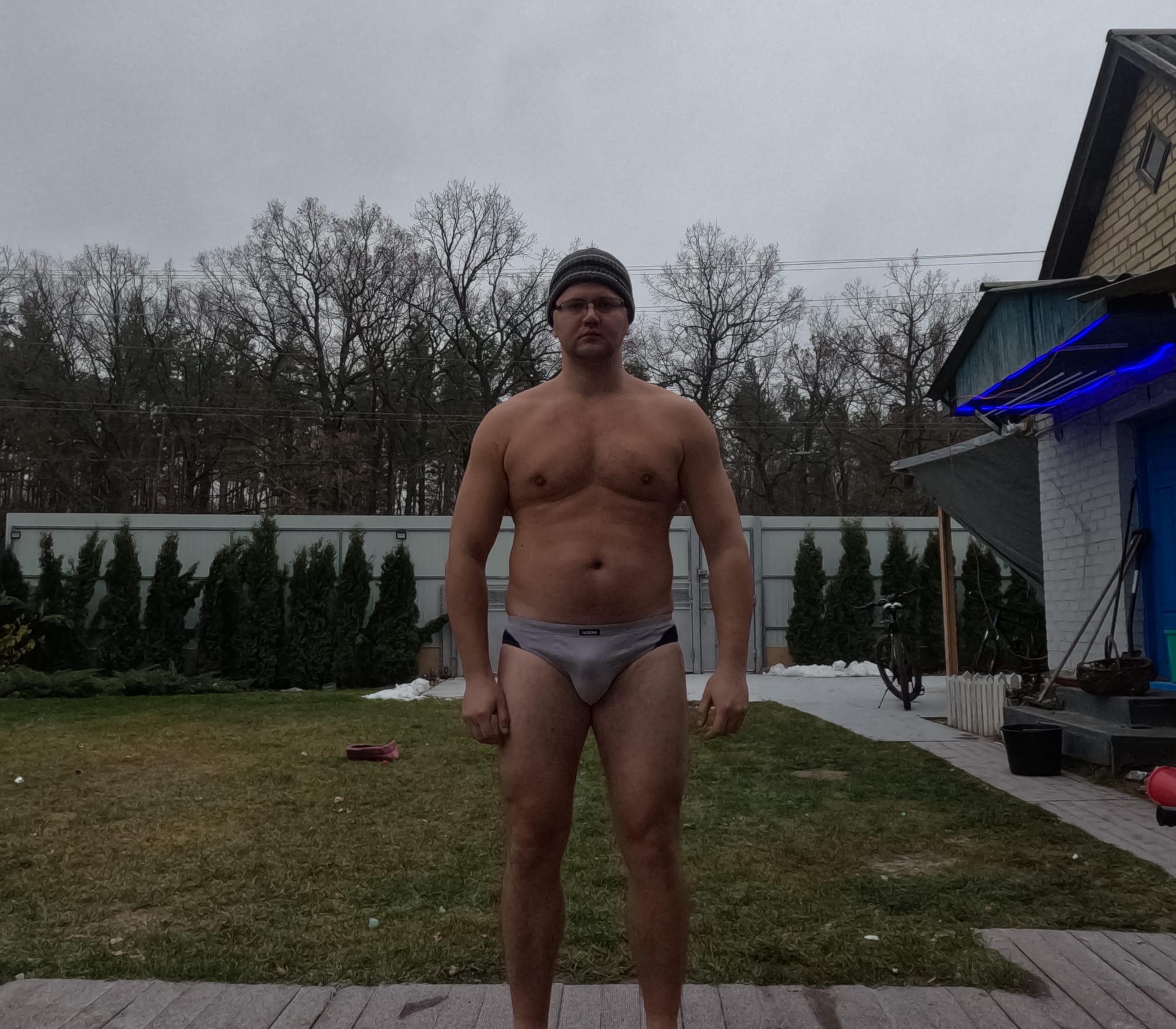Activities For the Week
Good time of day!
Past Achievements and Results
As I’ve mentioned before, I used to be quite interested in biochemistry and biology. So, when I was training and set myself a goal—like losing weight—I planned my actions with a clear understanding of the processes happening in the body. I built my daily routine, workout program, nutrition plan, and sports supplementation based on that knowledge. As a result, I achieved my goals quickly and effectively.
In 2018, I dropped from 113 kg to 93 kg in 2.5 months—a total weight loss of 20 kg. At that time, I looked, in my opinion, great.

Given my current state, I probably won’t be able to achieve such a result again, but the goal is more or less clear—I’ll aim to get back into my old shape.
Current State
Right now, I’ve got a decent chunk of lard on me—104 kg. And this chunk of lard has also hit rock bottom, so I’ll have to start everything from scratch—and in rougher, tremor-ridden conditions.
As we know, a healthy body means a healthy mind. So, following V.’s recommendation, I started my recovery with an attempt to improve my physical condition. So far, I’ve already:
- Quit alcohol;
- Quit smoking;
- Entered my fourth day of dieting and am preparing for short-term fasts (as long ones are not allowed with PD);
- Started daily strength and stretching exercises.
I wanted to take a picture just now to document current affairs, but it’s a horror show. A proper sack of potatoes.

So I’ll post a spring photo instead—at least that’s something.
Getting Down to Business: Principles Behind My Action Plan
Okay. There are probably thousands of websites, apps, and blogs out there that will tell you how to build a workout plan—or more likely, give you a short questionnaire (gender, age, height, lifestyle), pretend to generate a personalized program, and then… ask you to buy a premium subscription! And once you do, you find something obvious inside, like: “The more you run, the more calories you burn!” A degree in Physical Education is needed for such insight.
In contrast, I’ve always set my own goals and methods for achieving them, based on knowledge I gained through self-education. I refreshed that knowledge from my notes, and here are the postulates I’ll base next week’s plan on:
- The FIRST. The MAIN. Maybe even the ONLY and entirely SUFFICIENT principle: to lose weight, consume fewer calories than you burn; to gain weight, consume more than you burn. All genius is simple. A law of nature. Mendel’s first law, kind of. This isn’t about exercise directly, but it’s the foundation of weight loss.
- Aerobics (running, biking) and strength exercises help with weight loss. Strength training, in particular, increases your metabolic rate even after the workout, so fat burning continues post-training. I’ll alternate both types in my program. Back in the day, when I was young and beautiful, I trained six days a week: a classic three-day split (Mon-Wed-Fri) alternated with light cycling while reading a book (Tue-Thu-Sat). I never forced myself—everything was for pleasure.
- Strength training should use dumbbells and barbells—machines are no good. Why? Because compound exercises involve many small stabilizer muscles, leading to more calorie burn.
- Exercises should target both fast- and slow-twitch fibers. I do several sets with heavy weights (fewer reps), followed by lighter weights (more reps).
- Rest between sets should be minimal.
- I will not eat before or after workouts. I want to burn fat, not the food I just shoved in.
- Sleep. The body wants and needs sleep. Give it that. (I can’t, because of side effects.)
- Shock the body—a vital principle, but not for the early stages. Beginners can wait a year to start using drop sets, supersets, negatives, etc. If returning after a break, about 6 months of standard training is enough before adding those.
- Train in the morning when possible. It’s been shown that morning metabolism is up to 40% higher.
- Warm-up and cool-down!
The Program for Week One
Taking into account everything above—and my current state and lack of sleep—here’s my planned routine for the coming week
I. Monday
Low-intensity strength training: Chest – Legs
- Hanging leg raises on bar – 3×10
- Dumbbell squats – 4–5×8–12
- Side lunges with dumbbell – 4×10
- Barbell bench press – 4–5×10–12
- Dumbbell bench press – 3–4×10–12
- Dumbbell flies – 3×10–15
- Stationary bike – 40 min
II. Tuesday
Circuit training: whole body, no rest between exercises. After 1 circuit—rest. Total 3–4 rounds.
- Deadlift – 4×12
- Push-ups – 4×max
- Dumbbell squats – 4×12
- Overhead barbell press – 4×10
- Upright barbell row – 4×10
- Dumbbell curls – 4×10
- Crunches – 4×max
- Forest walk – 1 lap
III. Wednesday
High-intensity cardio (3–4 sets):
- Slow – 2 min
- Fast – 30 sec
- Slow – 2 min
- Fast – 30 sec
- Slow – 2 min
- Rest – 5 min.
IV. Thursday
Aerobic + anaerobic combo:
- Jump rope – 50 reps
- Hanging leg raises – 2×max
- Punching bag – 3 min
- Bent-over barbell row – 3×12
- Bicycle crunches – 3×max
- One-arm dumbbell row – 3×15
- Jump rope – 50 reps
- Pull-ups – 3 sets during the day
V. Friday
Supersets:
- Standing barbell press + lateral dumbbell raises – 3 rounds
- Tricep dips + hammer curls – 3 rounds
- Static bar hang for biceps – 3×max
- Lying French press – 3×15
- Barbell curl (negatives) – 1 set
VI. Saturday
Forest walk at power-walking pace.
So the plan is set. Now the key is to get home by Monday.
Join me, and I’ll give you 10 kopecks!

